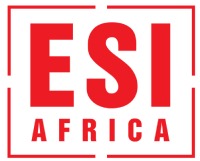IRP2025 shifts South Africa’s R2.23tn energy plan, adopts nuclear
Analysts note that execution of nuclear power depends heavily on financing, procurement transparency, and policy consistency.
South Africa’s newly approved Integrated Resource Plan 2025 (IRP2025) has set out an ambitious R2.23 trillion investment roadmap for new electricity generation. The government states this move will balance energy security, decarbonisation and industrial growth.
The roadmap, announced by Minister of Electricity and Energy Dr Kgosientsho Ramokgopa on 19 October, introduces a diversified energy mix and positions nuclear power as a key component in the country’s long-term strategy.
The Nuclear Industry Association of South Africa (NIASA) has welcomed this inclusion, describing it as a “bold and pragmatic milestone” that aligns with national goals for a clean and secure energy future.
Nuclear power regains policy momentum
After years of uncertainty, nuclear energy is once again on the policy table. The IRP2025 recognises nuclear as a dispatchable, low-carbon option capable of providing the large-scale, stable power needed to support South Africa’s industrial base.
According to NIASA, the plan opens new opportunities for the sector through:
- Support localisation of supply chains and manufacturing for nuclear components and infrastructure.
- Collaborate in skills development and training initiatives to prepare a new generation of nuclear professionals.
- Engage transparently in nuclear licensing, safety assurance and public participation processes to build trust and uphold world-class regulatory standards.
- Partner with government and financiers to unlock economic spin-offs from nuclear investment, including employment, innovation and regional cooperation in Africa.
- Support public awareness campaigns and community engagement, promoting understanding of nuclear safety, waste management and environmental stewardship.
Industry stakeholders, including Eskom, the South African Nuclear Energy Corporation (Necsa), iThemba LABS, and the National Radioactive Waste Disposal Institute (NRWDI), are expected to play central roles in delivering these projects.
Implementation hinges on governance and financing
While the inclusion of nuclear has been welcomed by industry, analysts note that execution will depend heavily on financing, procurement transparency and policy consistency. These are areas where previous energy plans have stumbled.
NIASA stressed the importance of:
- Establishing robust financing mechanisms and transparent procurement frameworks that ensure value for money.
- Maintaining a strong regulatory environment for nuclear safety, security and Non-Proliferation.
- Ensuring consistent policy certainty and interdepartmental coordination to accelerate project delivery.
- Strengthening inter-institutional collaboration between government, industry and research entities such as Necsa, iThemba LABS, and NRWDI to maximise innovation and capacity.
“NIASA will continue advocating for policy coherence, regional collaboration, and the mobilisation of both domestic and international financing to support Africa’s equitable participation in the global nuclear renaissance,” said the organisation on the official approval of the roadmap.
A balancing act for the country’s Just Energy Transition
The IRP2025’s support for nuclear comes as South Africa works to balance its Just Energy Transition with the need for reliable, affordable power. Projects such as the Koeberg Life Extension and the proposed New Build Programme are expected to contribute to decarbonisation while sustaining industrial output and employment.
Critics of the plan argue that nuclear’s high upfront costs and long lead times remain challenges, while supporters say it offers stability that intermittent renewables cannot.
As the debate continues, NIASA maintains that nuclear energy can underpin a low-carbon, industrialised future if implemented with sound governance and transparent oversight.
“Nuclear energy is not just about megawatts, it’s about nation-building and long-term sustainability,” the association said.
The coming months will test whether the IRP2025 can deliver on its promise of cleaner power and a stronger, more secure energy system for South Africa’s future.
Cover photo: South Africa’s flagship nuclear research reactor, SAFARI-1, is a 20MW light water-moderated reactor commissioned on 18 March 1965. Source: NECSA


